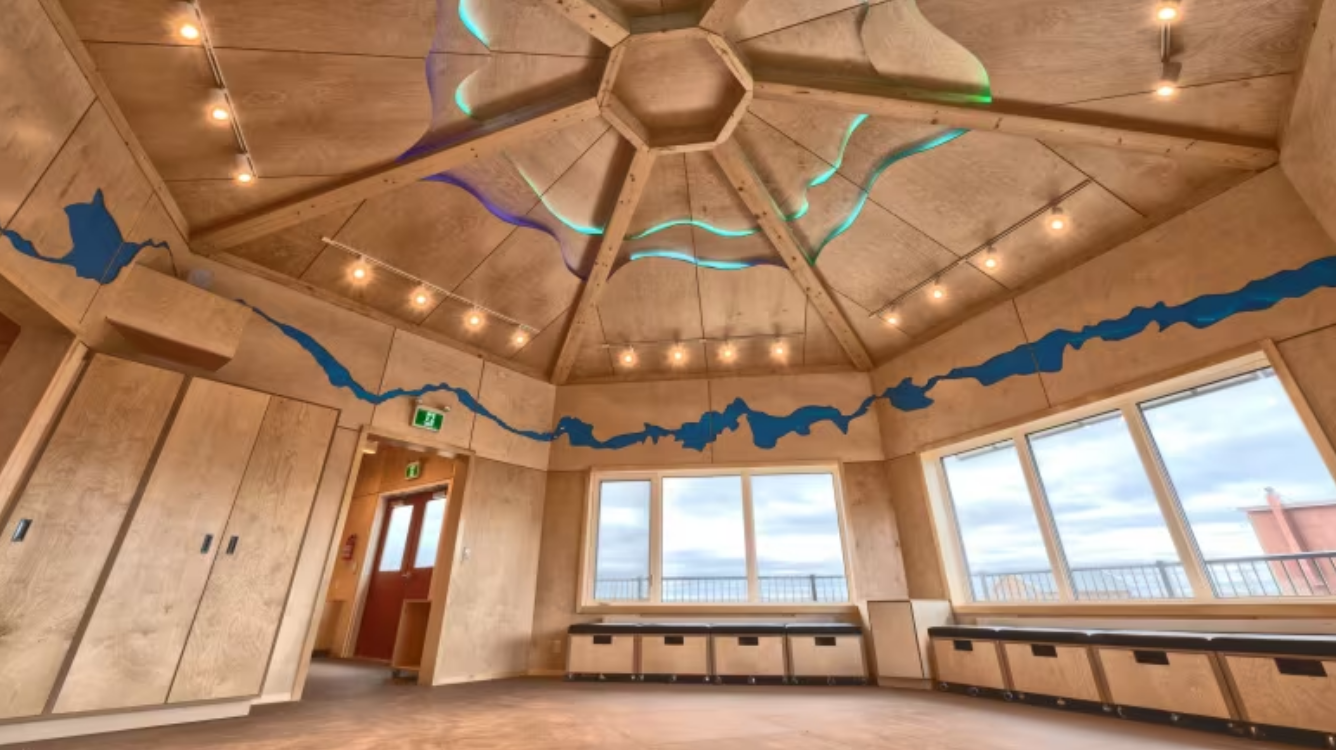Nunavut’s newest cultural centre rethinks the basics of building in the Arctic

A new cultural centre in Cambridge Bay, Nunavut, will provide space where elders can share traditional skills such as how to prepare meat and animal hide, and how to sew.
The Kuugalaaq campus was designed using Inuinnait design principles which were then combined with new building technology. The space will help community members pass on traditions and preserve their culture.
Emily Angulalik, the executive director of Pitquhirnikkut Ilihautiniq — the Kitikmeot Heritage Society — said elders have dreamed of the space for many years, though the project started to fully take shape eight years ago.
“That’s the aim of our elders — where they want to pass on their culture, their language, through the skills that they have,” she said.
The opening ceremony scheduled for Sept. 6 was meant to be “like a homecoming for our elders,” Angulalik said.
Design based on tradition
The design and build involved community input and local construction workers. The building itself is roughly hexagonal, with a series of rooms organized around the central gathering room.
“From the exterior, it looks a little space-age due to the number of solar panels on the building,” said Brendan Griebel, the project lead.
The interior is spacious with a vaulted ceiling, and is informed by Inuinnait traditional gathering spaces.
“We put years of research into this, going back to looking at the ways that Inuinnait lived in harmony with their landscape,” Griebel said.
‘[We] use certain architectural principles like how light moves, how heat moves, and we worked with this last generation of elders who grew up in these traditional igloos and skin tents and had them speak to how they remember physically feeling in these spaces.”
Griebel said it’s made with sustainability and energy efficiency in mind. The building includes newly designed wall panelling that is non-flammable and doesn’t get mouldy. It also has more than 60 electronic monitors that measure the performance of the building’s materials, technology and design. For example, Griebel said it will show how the building stands up in cold weather when 60 people are drum dancing inside.
“A lot of the funding has kind of supported our attempt to rethink the very basics of a building in the Arctic and kind of get out of these models that have been structuring houses since the 1950s and we know don’t work anymore … to find something that’s a better fit for the Arctic,” he said.
Mentorship
Kuugalaaq will offer an in-house elder-in-training program, which will offer mentorship to Inuinnait adults so that they can become the next generation of Elders.
“[The program will be] continuing the pattern of intergenerational knowledge transfer that has been at the heart of Inuinnait life,” reads a statement from the Kitikmeot Heritage Society.
The grand opening of Kuugalaaq happens Sept. 6, and will include an open house of the facility, drum dancing and food from the land.
With files from Shannon Scott
Related stories from around the North:
Canada: Inuvik, N.W.T., residents find strength in language classes, CBC News
Finland: Everyone encouraged to boost Sami language visibility in Finland, Norway and Sweden this week, Eye on the Arctic
Norway: Indigenous and minority language names for Norway now have official status, The Independent Barents Observer
Russia: German project to house everything published in Siberian and Arctic languages to seek new funding, Eye on the Arctic
Sweden: Can cross-border cooperation help decolonize Sami-language education, Eye on the Arctic
United States: Inuit leaders applaud UN move to designate International Decade of Indigenous Languages, Eye on the Arctic



